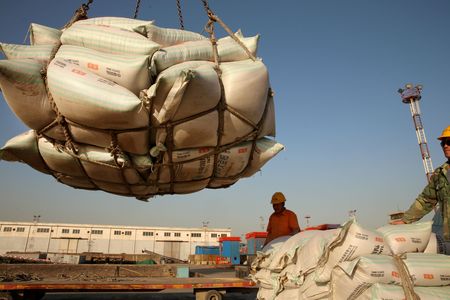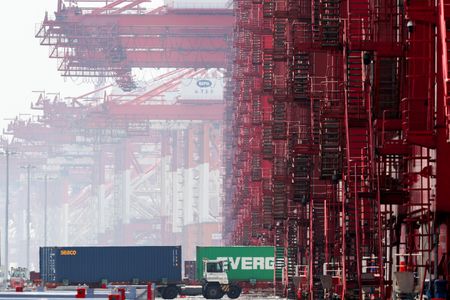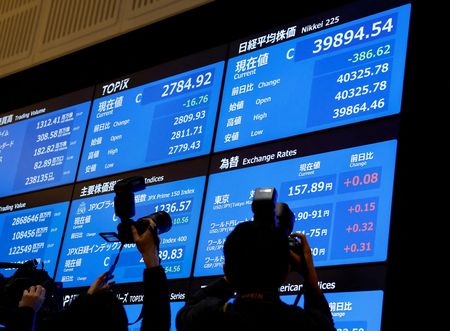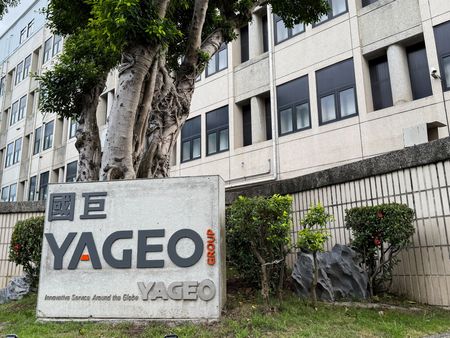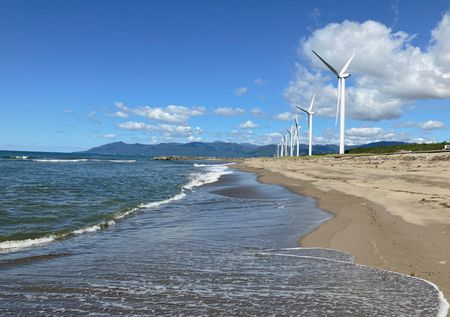(Reuters) – China’s export growth picked up steam in December, while imports recovered, closing out the year on a positive note as the world’s second-largest economy braces for mounting trade risks with the incoming U.S. administration.
Outbound shipments in December rose 10.7% year-on-year, customs data showed on Monday, while imports surprised to the upside with a 1% growth. Economists had expected a 1.5% decline.
KEY POINTS: * Soybean: December imports at 7.94 mmt, down 0.2% y/y
* Unwrought copper: Dec imports at 559,000 mt, up 17.8% y/y
* Coal: December imports at 52.35 mt, up 11% y/y
* Iron ore: December imports at 112.49 mt, up 11.5% y/y
* Rare earths: December imports at 9,645 T, down 41.1% y/y
* Crude oil: December imports at 47.84 mmt, down 1.08% y/y
Preliminary table of commodity trade data
Below are comments from analysts on the commodities data.
COMMENT ON IRON ORE
TOMAS GUTIERREZ, HEAD OF DATA, KALLANISH COMMODITIES, LONDON
China will probably see a slight drop in total iron ore demand in 2025 … There will also be support for local mining. Spot demand from China for seaborne iron ore should decline, though there may be some more equity ore imported. COMMENT ON RARE EARTH
DAAN DE JONGE, ANALYST, BENCHMARK MINERAL INTELLIGENCE, LONDON
We expect the market to behave largely similar in 2025 as it did last year. The market is still oversupplied to a fairly significant degree, and it will take some time for lower supply growth to meaningfully impact the market balance. Reductions in supply growth coming out of China are notable, but not enough to cause a rationalisation in 2025.
COMMENT ON CHINA CRUDE IMPORTS
EMRIL JAMIL, ANALYST, LSEG
China in 2024 was a let down with the market expecting steady to stronger growth from 2023. Deflationary pressures and transport electrification dampened growth.
COMMENT ON COAL
TOBY HASSALL, LEAD COAL ANALYST, LSEG
China’s coal imports in 2024 were lifted by a decline in seaborne coal prices, which prompted import arbitrage against domestic supply for various coal types. Domestic coal production grew by just 1% year-on-year, a much slower pace compared with the previous two years.
China’s thermal power generation likely grew about 1% year-on-year in 2024, indicating a similar rise in coal consumption. Coal use in the cement and steel sectors was tepid due to weak construction activity. The surge in coal imports, relative to consumption, mainly reflected lower import prices, which displaced some higher-cost domestic supply.
COMMENT ON SOYBEAN
ROSA WANG, ANALYST, AGRO-CONSULTANCY JCI
Record annual import volumes were driven by several factors, including a significant drop in CBOT soybean prices in 2024, which lowered import costs, improved crushing margins, and increased purchasing activity from oil mills. Additionally, concerns over the trade war prompted oil mills and reserves to stock up in advance. The drop in imports in December may have been due to slower customs clearance.
COMMENT ON COPPER
CORKI XIAO, SENIOR ANALYST, MYSTEELThe monthly increase in copper imports is attributed to trading houses fulfilling their remaining volume obligations under the annual contracts they signed for 2024.
LINKS: For details, see the official Customs website (www.customs.gov.cn)
BACKGROUND:
China is the world’s biggest crude oil importer and top buyer of coal, copper, iron ore and soybeans.
(Reporting by Asia Commodities and Energy team; Editing by Sherry Jacob-Phillips)

